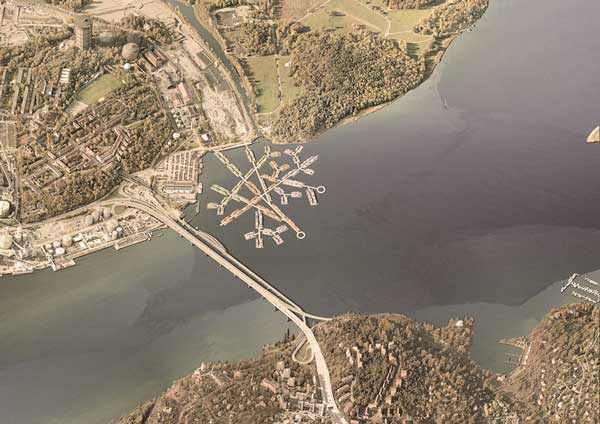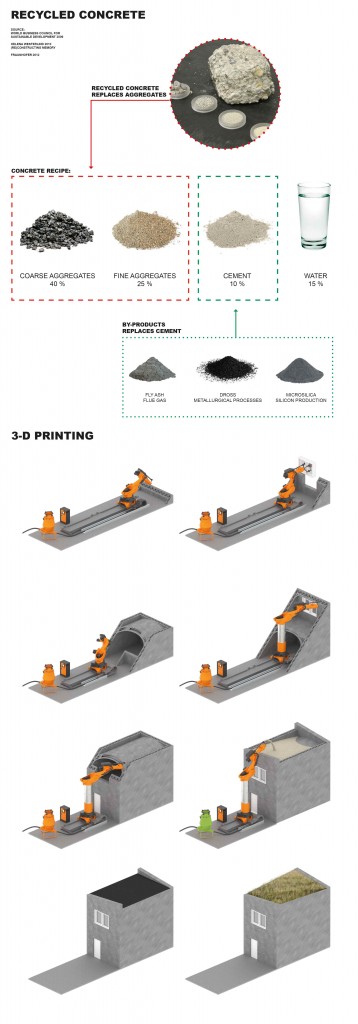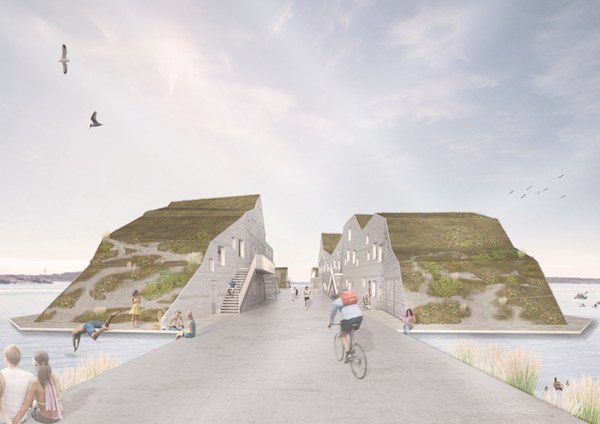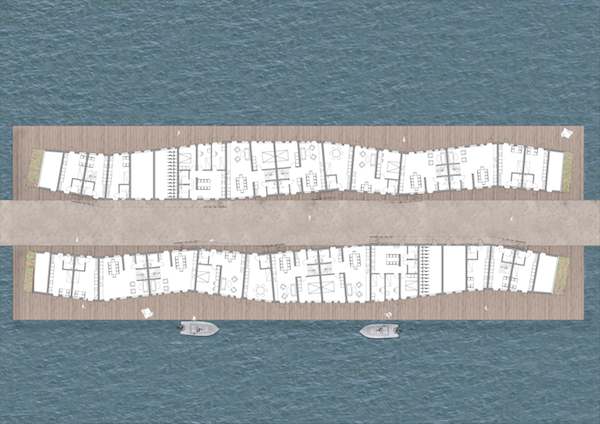
[Image above] An aerial view of Belatchew Labs’ proposed SwimCity project—a floating housing development that incorporates recycled concrete and 3D printing for sustainable construction and living. Credit: Belatchew Arkitekter
Sweden is already known as one of the most eco-friendly and sustainable countries in the world, and its eco-conscious inhabitants are keeping ahead of the curve.
An experimental studio of Swiss architectural firm Belatchew Arkitekter, called Belatchew Labs, has unveiled a new project that envisions creating floating housing complexes that are sustainable, save land, and provide living space to young adults.
Called SwimCity, the project proposes to use recycled concrete to reduce the often-heavy carbon footprint of construction. Combined with 3D printed techniques to fashion the structures, SwimCity is not just sustainable, but cost effective and efficient to build, too.
As seen in the inforgraphic below, SwimCity proposes building with recycled concrete crushed into 40% coarse and 25% fine aggregates, combined with 10% recycled cement—from fly ash, dross, and microsilica—and 15% water.
To maintain the project’s efficiency and sustainability, the recycled concrete would be 3D-printed into the desired structures. And because the housing is to be built floating on water, those structures’ possibilities are almost endless. The press release depicts simple hillside-encased structures floating on the water in snowflake-arranged designs, but those are just one possible configuration.
“The technological development in 3D-printed concrete has come very far. With SwimCity we show how the new technology makes it possible for us to create unique buildings which today’s prefab industry is not capable of,” Rahel Belatchew Lerdell, CEO and founder of Belatchew Arkitekter, says in a SwimCity press release.
In addition to sustainable materials and building techniques, the projects aqueous location is also a nod to its eco-consciousness.
“Besides that water is an unused building ground, it is also a potential energy source that can be used for energy in various ways, such as wave power and water–water heat pumps,” according to the release.
Energy systems based on buoys connected to linear generators are estimated to be able to deliver 24 TWh each year from the Baltic Sea’s waves, according to Belatchew.
Although Belatchew says the project has been supported by the Swedish National Board of Housing, Building and Planning, it’s unclear whether the project is more than just a concept.
According to the Belatchew website, “Belatchew Labs is a studio within Belatchew Arkitekter that works with experimental projects that aims first and foremost to investigate and test new approaches and solutions to urban and architectonical issues. The projects are visionary and strive to inspire, question and challenge.”
That being said, no word back from Rahel Belatchew about whether there are any problems with alkali corrosion of the concrete from salt water. While this is a problem in general, low permeability concrete can help mitigate the corrosive effects of saltwater on concrete structures.



